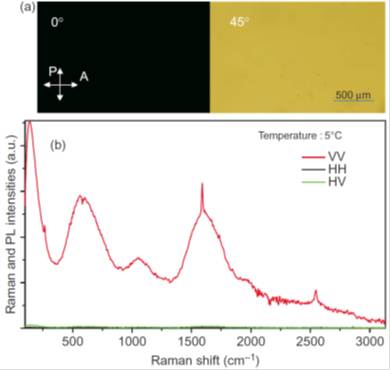Rechercher
Accueil > La Recherche > Axes & Equipes > Matière Molle & Verres > Equipe : Matière Molle > Theme : Soft composites
Aligning and structuring nanocomposites with liquid crystals
publié le , mis à jour le
Aligning and structuring nanocomposites with liquid crystals
People involved : E. Anglaret (PR1, L2C Nanostructures), M. Nobili (PR1), C. Blanc (CR1), N. Ould-Moussa (post-doc).
Anisotropic nanoparticles (spindle-like, rod-like...) might have very interesting individual anisotropic characteristics (magnetic, optical ones ...). The translation of these properties to a macroscopic material however requires a good control of the orientation of the particles. Intermediate liquid crystalline states can be used during the design of nanocomposites (see [1)). Two main approaches have been explored in the recent years :
(i) Anisotropic particles dispersed in a simple fluid may form colloidal liquid crystals at sufficiently high concentration. A substantial part of our work has thus been focused on the realization of functional single wall carbon nanotubes composites and films via a mesophase (work in collaboration with L2C Nanostructures and CRPP recently reviewed in [2] Phil Trans A, 20120499, 2013]).

Figure. SWCNT suspensions in a chromonic liquid crystal cell (thickness 6 μm) made by two parallely rubbed polyimide substrates. (a) Observations of light extinction between crossed polarizers at 0° and 45° show that the DSCG liquid crystal is oriented in the direction of rubbing (as expected !). (b) the SWCNT polarised Raman and photoluminescence spectra of the same sample, excited with a laser line at 1064 nm show also that the nanotubes are isolated (a large amount of photoluminescence is observed) and perfectly oriented along the liquid crystal director . In red the VV component consisting of both incident and scattered polarisations parallel to the rubbing direction. In green and blue (almost extinct) the components HV and HH having, respectively, one or two polarisation vectors perpendicular to the rubbing direction (from [3])
(ii) The introduction of a small amount of anisotropic nanoparticles in another liquid crystal can also drastically change the properties of the resulting liquid crystal. For example the photoluminescence properties (see fig. and [3]) or the magnetic properties [4] of liquid crystals composites have been strongly enhanced by adding nanoparticles. The underlying phenomena strongly depend on the correlation between the orientation of the doping nanoparticles and the orientation of the liquid crystal molecules, but also on their respective orientational order parameters, whose evolution is still debated when mixing different anisotropic particles/molecules. We have developed techniques based on optical and Raman spectroscopies in the case of single wall carbon nanotubes to measure independently the order parameter of the LC matrix and the one of the particles ([3,5])
References :
- [1] Ch. Blanc, D. Coursault, and E. Lacaze, "Ordering nano-and microparticles assemblies with liquid crystals", Liquid Crystal Reviews, 2 ,1 (2013) DOI:10.1080/21680396.2013.818515 .
- [2] C. Zakri, Ch. Blanc, E. Grelet, C. Zamora-Ledezma, N. Puech, E. Anglaret, and Ph. Poulin, "Liquid crystals of carbon nanotubes and graphene", Phil. Trans. A, 371,20120499 (2013).
- [3] N. Ould-Moussa, Ch. Blanc, C. Zamora-Ledezma, O. D. Lavrentovich, I. I. Smalyukh, M. F. Islam, A. G. Yodh, M. Maugey, Ph. Poulin, E. Anglaret, and M. Nobili , "Dispersion and orientation of single walled carbon nanotubes in a chromonic liquid crystal", Liquid crystals, 40, 1628 (2013).
- [4] E. Ouskova, O.Buluy, C. Blanc, H. Dietsch, A.Mertelj , "Enhanced magneto-optical properties of suspensions of spindle type mono-dispersed hematite nano-particles in liquid crystal", Mol. Cryst. Liq. Cryst., 525, 104 (2010).
- [5] N. Puech, M. Dennison, Ch. Blanc, P. van der Schoot, M. Dijkstra, R. van Roij, Ph. Poulin, and E. Grelet, "Orientational order of carbon nanotube guests in a nematic host suspension of colloidal viral rods"., Phys. Rev. Lett., 108, 247801 (2012).








